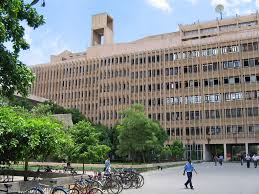 Higher education is an important step to get proper job and services in many recognized sectors. India’s higher education is the 3rd largest in the world after China and United States. IITs, IIMs, NITs, IIIT, University of Mumbai, Jawaharlal Nehru University have been globally acclaimed for their standards.
Higher education is an important step to get proper job and services in many recognized sectors. India’s higher education is the 3rd largest in the world after China and United States. IITs, IIMs, NITs, IIIT, University of Mumbai, Jawaharlal Nehru University have been globally acclaimed for their standards.
This is tertiary level of education or ‘+3’ stage which comes after ‘+2’. Higher Education in India is undertaken by University Grant Commission. 12 autonomous institutions established by the University Grant Commission to advice the government, enforce the standards and helps to make coordination between center and state.
Number of people going for Higher Education is increasing rapidly in India. Nearly 20,000 colleges and 8 million students were added by 2000-2011. In 2011 there were 42 central universities, 275 state universities, 130 deemed universities, 90 private universities, 5 institution under state act and 33 institutes of National Importance. India has large number of technology institutes. Distance learning and open institutes are also included in Higher Education System of India and looked after by Distance Education Council. Indira Gandhi National Open University is the largest university in the world by number of students.
There is a network of research institutions that provides opportunities for advance learning up to PhD in science, technology and agriculture streams. Many of these are internationally recognized. These institutes are managed by CSIR– Council of Scientific, Industrial Research and ICAR– India Council of Agriculture Research and DAE– Department of Atomic energy and other ministries.
Indian Institutes of Technology is the most prestigious institutions with in the hard science. Indian Institute of science is for science and engineering. There are thousands of colleges providing undergraduates and post graduates for science, agriculture, art and commerce. Under Graduate courses are of generally 3-4 year and post graduate courses are of 2-3 year.
In 2008 Maharastra’s Higher Secondary board revealed that 1 million students passed schooling and enrolled in higher education. In Maharastra tertiary enrollment ratio is 39%. In Tamilnadu, Haryana and Kerla enrollment ratio is comparably high. Across the country, tertiary enrollment rates are increasing at the rate 5-10%.
The private sector of education is also very strong and internationally recognized in India. This is the result of decision of government to divert spending to provide elementary education to all. Different state assemblies has passed bills for private institutes as Birla Institute of Technology and Science, Amity University, O. P. Jindal Global University etc.
